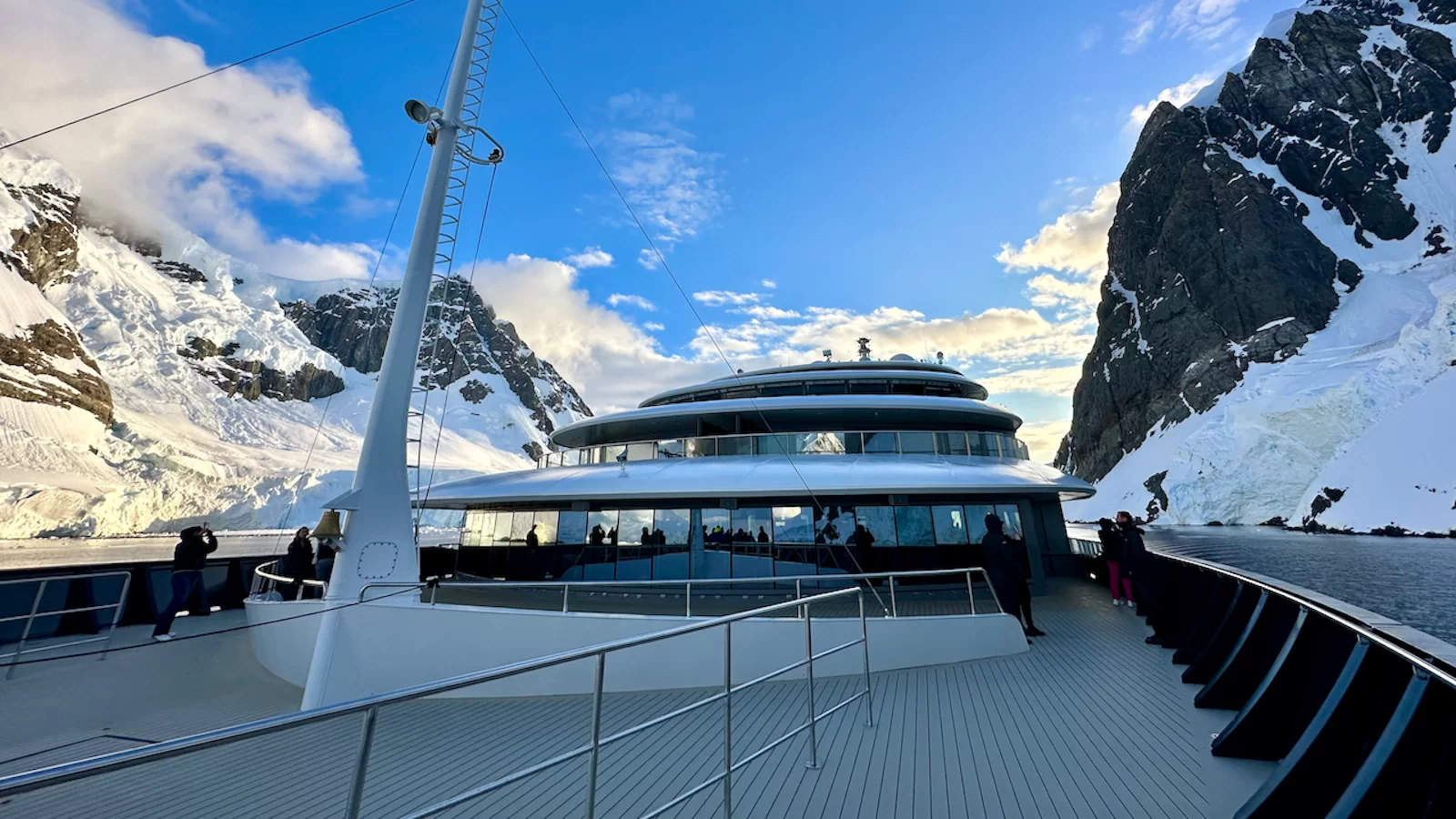Antarctica is a continent defined by the extremes of weather, landscape, wildlife and climate, and for all its unpredictability, change is its one consistency.
The uninhabited ice-covered continent is more than 1.5 times the size of the United States with some of the most unforgiving conditions on the planet. This makes just getting there difficult and exploring its landscape challenging even under the most controlled circumstances.
Antarctica’s glaciers and icebergs are in a perpetual state of evolution as they roll, shift, and calve on infinitely different scales, each time readjusting to a new equilibrium.
“Antarctica is a feeling,” said Captain Radomir Novosel to his 148 expedition guests on-board the Scenic Eclipse II Discovery Yacht. “You can’t understand it without experiencing it.”
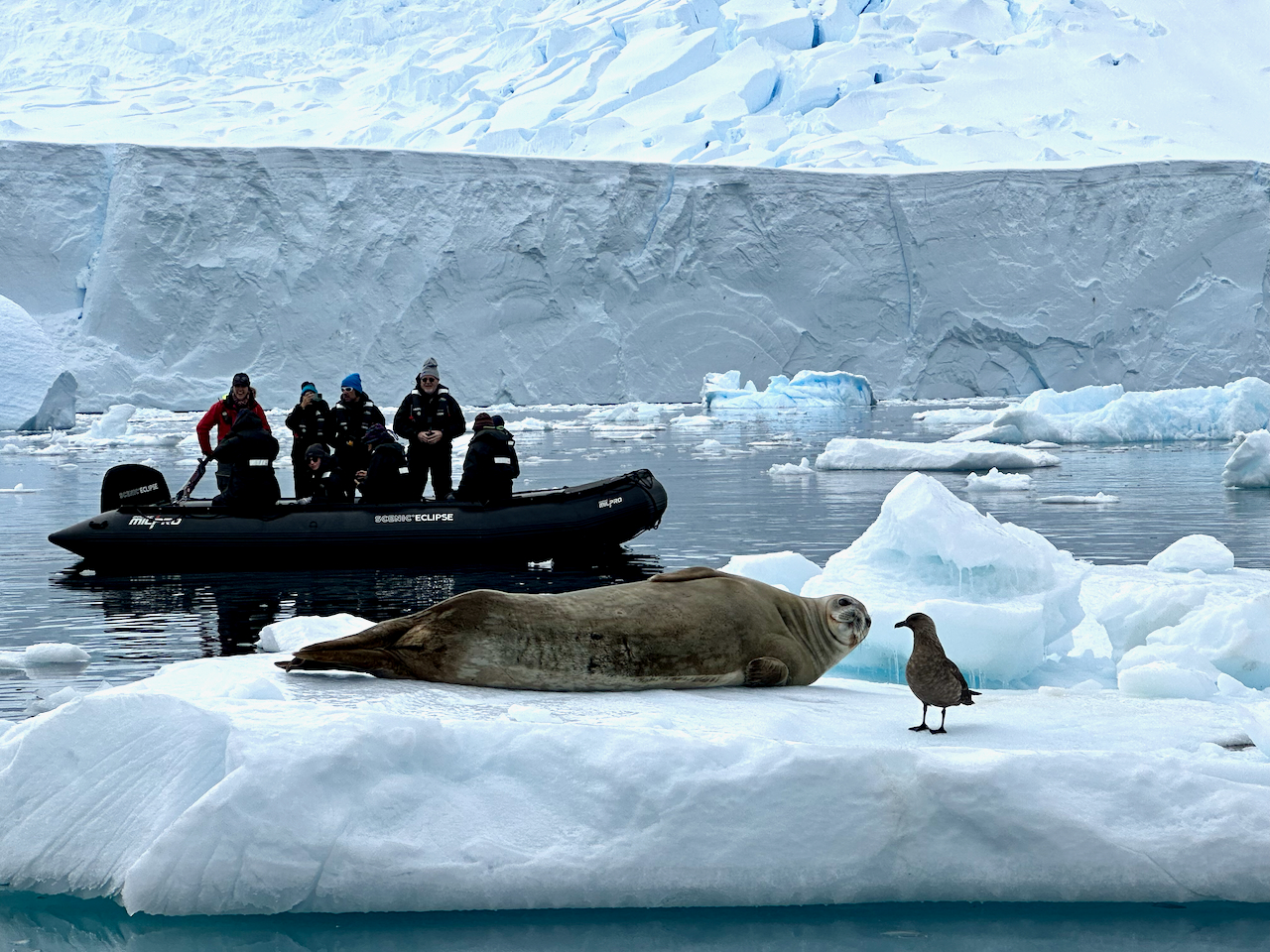
An Antarctic expedition beyond the Antarctic Circle. Photo by Anietra Hamper
Captain Novosel’s sentiments are accurate. While many people have heard about Antarctic expeditions, the percentage of those who have ever embarked on one is small, so an understanding of what this experience entails is unknown to most.
Kinute had the rare opportunity to step aboard the Scenic Eclipse II to join an Antarctic expedition that went beyond the Antarctic Circle (66°33′ S). The only other signs of human life in the regions south of the Antarctic peninsula are a few research stations positioned on the ice-covered mountains.
Join Kinute for an unforgettable journey as we break down the experience of a true Antarctic expedition in one of the harshest environments on Earth.
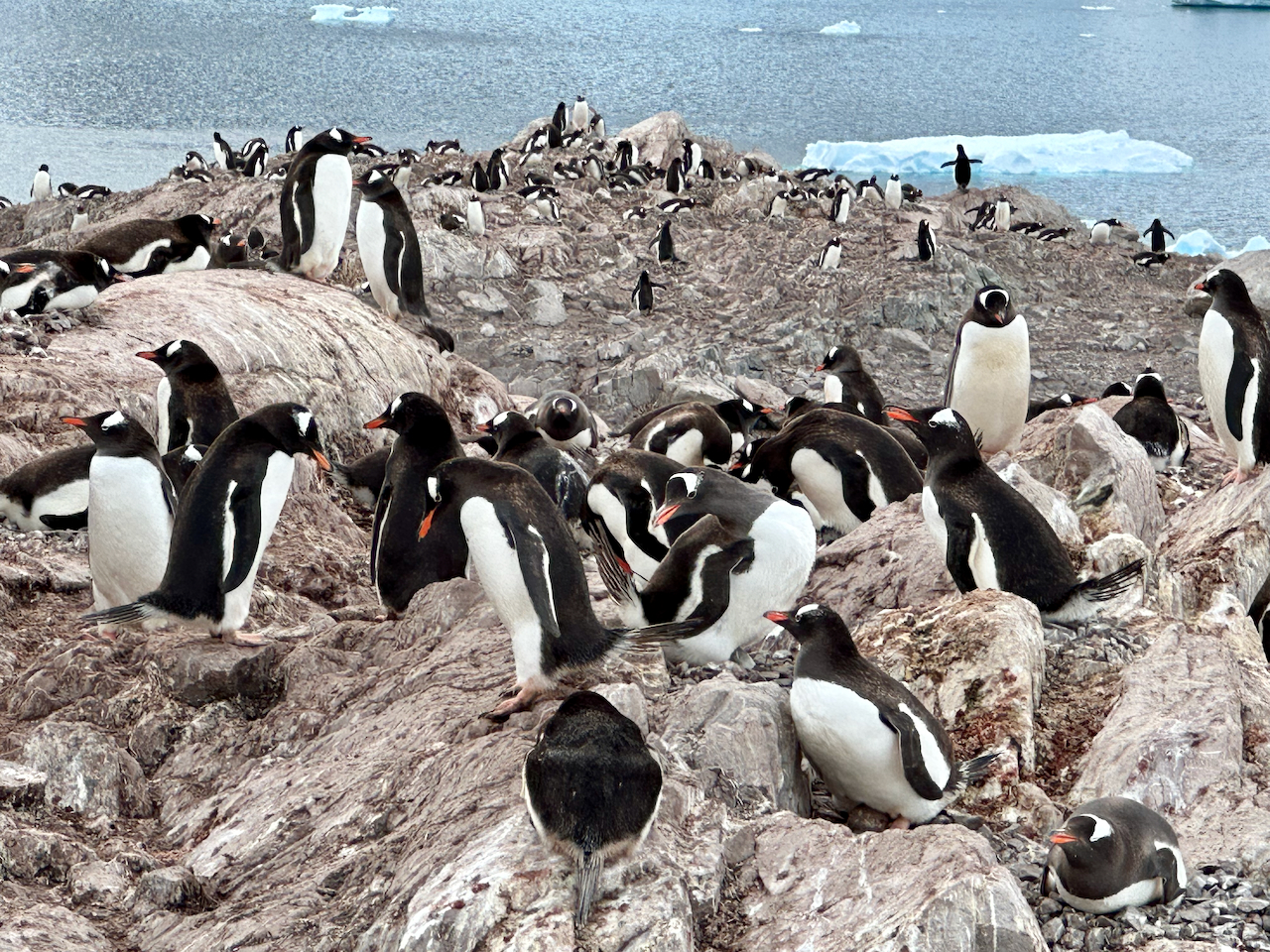
Gentoo penguin colony in Antarctica. Photo by Anietra Hamper
Beyond the Antarctic Circle
Though the natural rhythm of Antarctica is unpredictable there is still a gentle order to the wildlife that calls it home. Pods of orcas triangulate to hunt a minke whale while penguins nest with their chicks during the summer period between October and March. This short season is all the time penguins have to prepare their young for the brutal seas and predators that they will encounter once their waterproof feathers form in a few months’ time.
Despite Antarctica’s harsh environment, it is a delicate, vulnerable place worthy of being protected. So while the concept of an expedition conjures images of explorers trekking into unknown frozen regions, the reality is much different. Every human interaction with the continent by land, air or sea is carefully orchestrated and managed. Visitors must arrive and leave as if they’ve never been there at all.
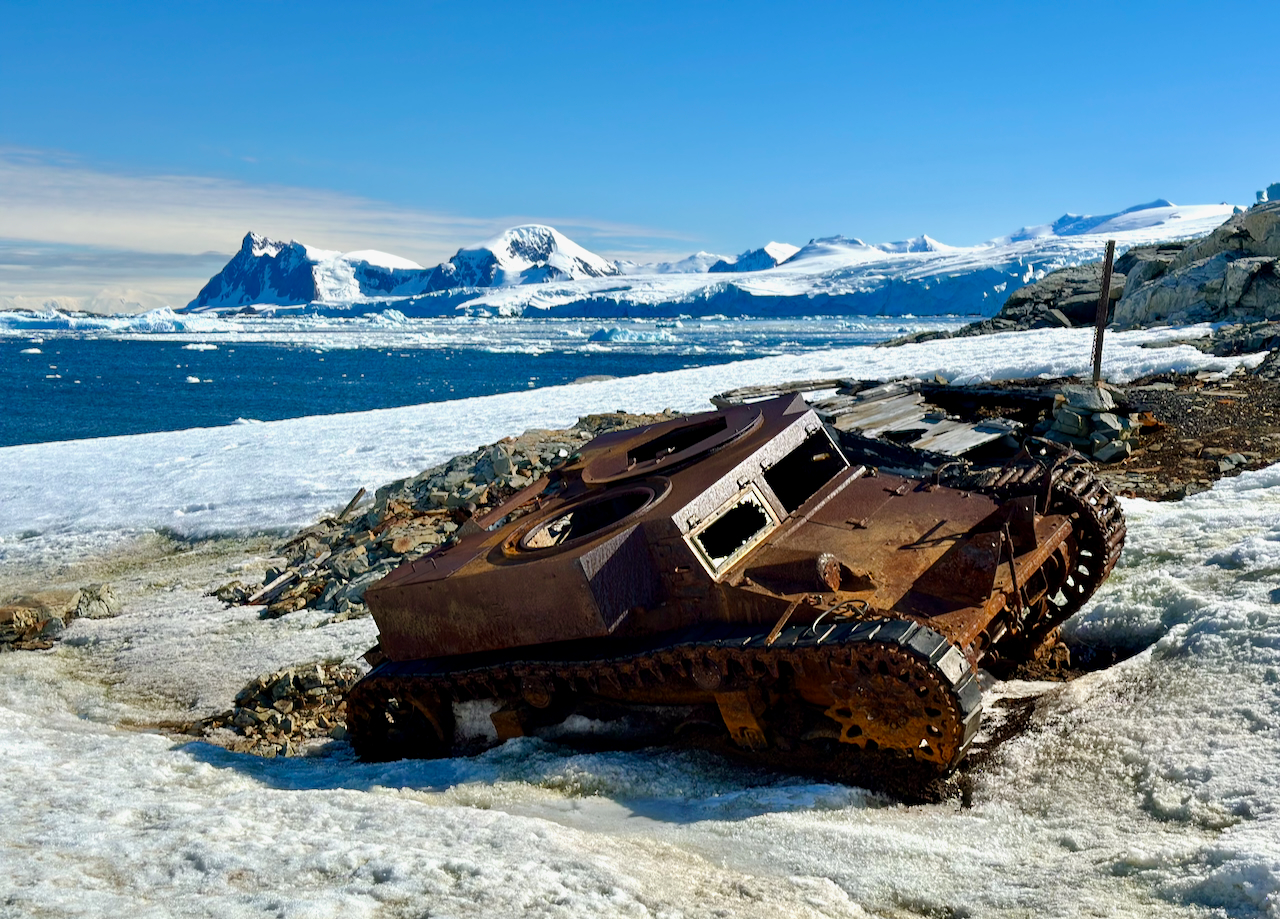
Remnants left behind at an abandoned research station in Antarctica. Photo by Anietra Hamper
A true Antarctic expedition is a special transformative journey for anyone who dares to venture into the unknown frozen abyss. Expedition vessels like the Scenic Eclipse II that are purpose-built for Antarctica’s harsh conditions make it possible for people to carefully journey to this destination. Advanced marine technology and satellite navigation systems mean expeditions can go farther south than ever before.
“Most ships go to the edge of the Antarctic Circle and go home,” said Jason Flesher, director of expeditions for Scenic Eclipse. “We go farther south because we can. It’s kind of a rite of passage crossing the Antarctic Circle and spending time there where it’s a rawer environment.”
What’s there?
“It’s more incredible geology with old research bases and mountains. We want guests to see more, like different penguin species, whales and we can do that by being one of the only ships that can go that far,” said Flesher.
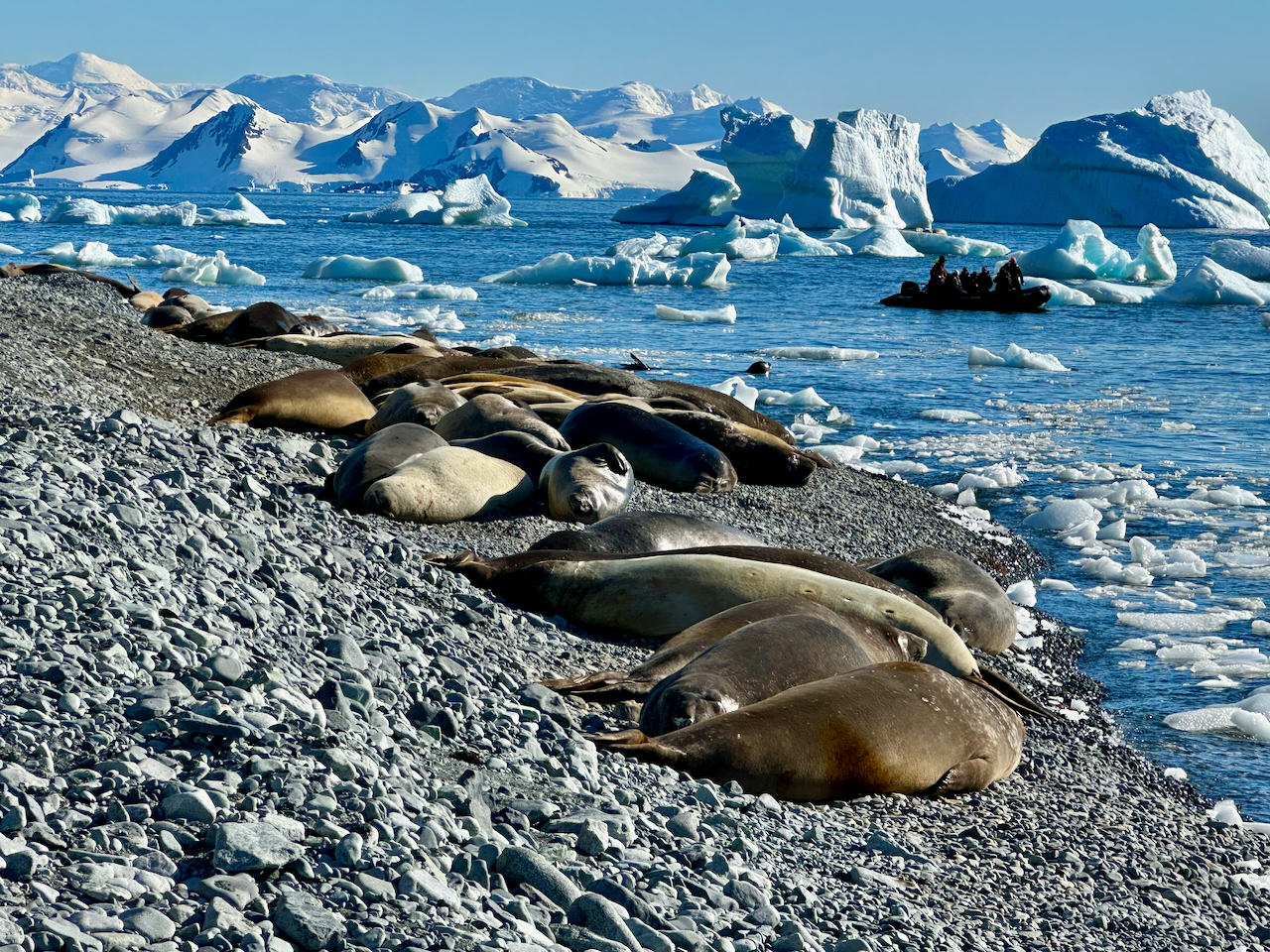
Elephant seals resting on shore. Photo by Anietra Hamper
In these regions, visitors see Adelie penguin colonies commandeer coastal islands to nest and waddle along penguin superhighways carved out as deep channels in the snow leading to the water. Behemoth elephant seals weighing up to 8,000 pounds rest on island shorelines undeterred by the sight of humans.
An Antarctic expedition offers a lifetime of memories while fundamentally changing the way anyone who visits it views their own existence on the planet and their responsibility of caring for it.

Ushuaia is the embarkation point for most Antarctic expeditions. Photo by Anietra Hamper
Getting to Antarctica
One of the reasons that Antarctica is inaccessible to most people is because getting there is a journey all on its own, with the most challenging part being crossing the ferocious Drake Passage.
Guests who embark on the journey start in Ushuaia, Argentina, the most southerly city in the world.
The Drake Passage is a notoriously unforgiving section of water between the southern tip of Argentina and the Antarctic peninsula. It’s earned its reputation from the violently clashing water where the Atlantic and Pacific oceans collide.
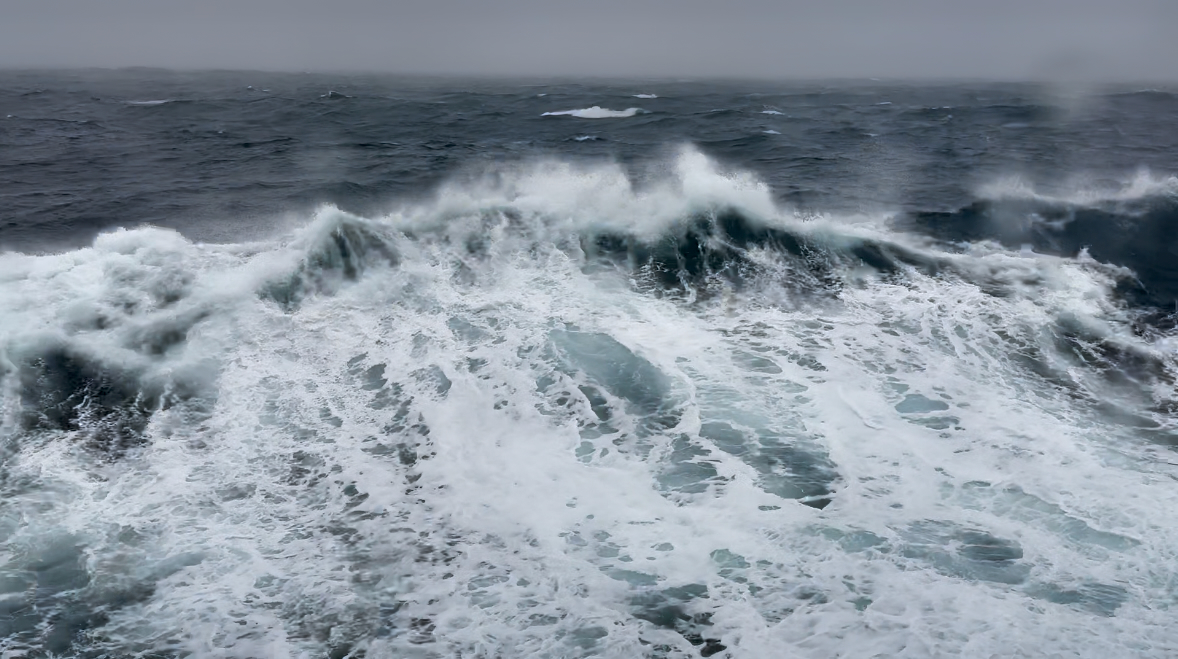
The waves in the Drake Passage. Photo by Anietra Hamper
The 600-mile journey between Cape Horn and the South Shetland Islands takes two days to cross, often leaving travelers seasick. The Scenic Eclipse II has the most advanced stabilizers that exist, helping ease the impact of the Drake Passage for passengers.
“Her stabilizers are 50% larger than any other expedition ships and 30% smaller than the world’s largest cruise ship, so this is why you’re not feeling 5-6-meter swells,” said Flesher.
Once through the Drake Passage the scenery becomes one out of an Ansel Adams photograph where colors fade into shades of white and gray. The first time an iceberg floats by in open water it’s Antarctica’s door opening to gently ease adventurers into the frozen world that few have been to and even fewer understand.
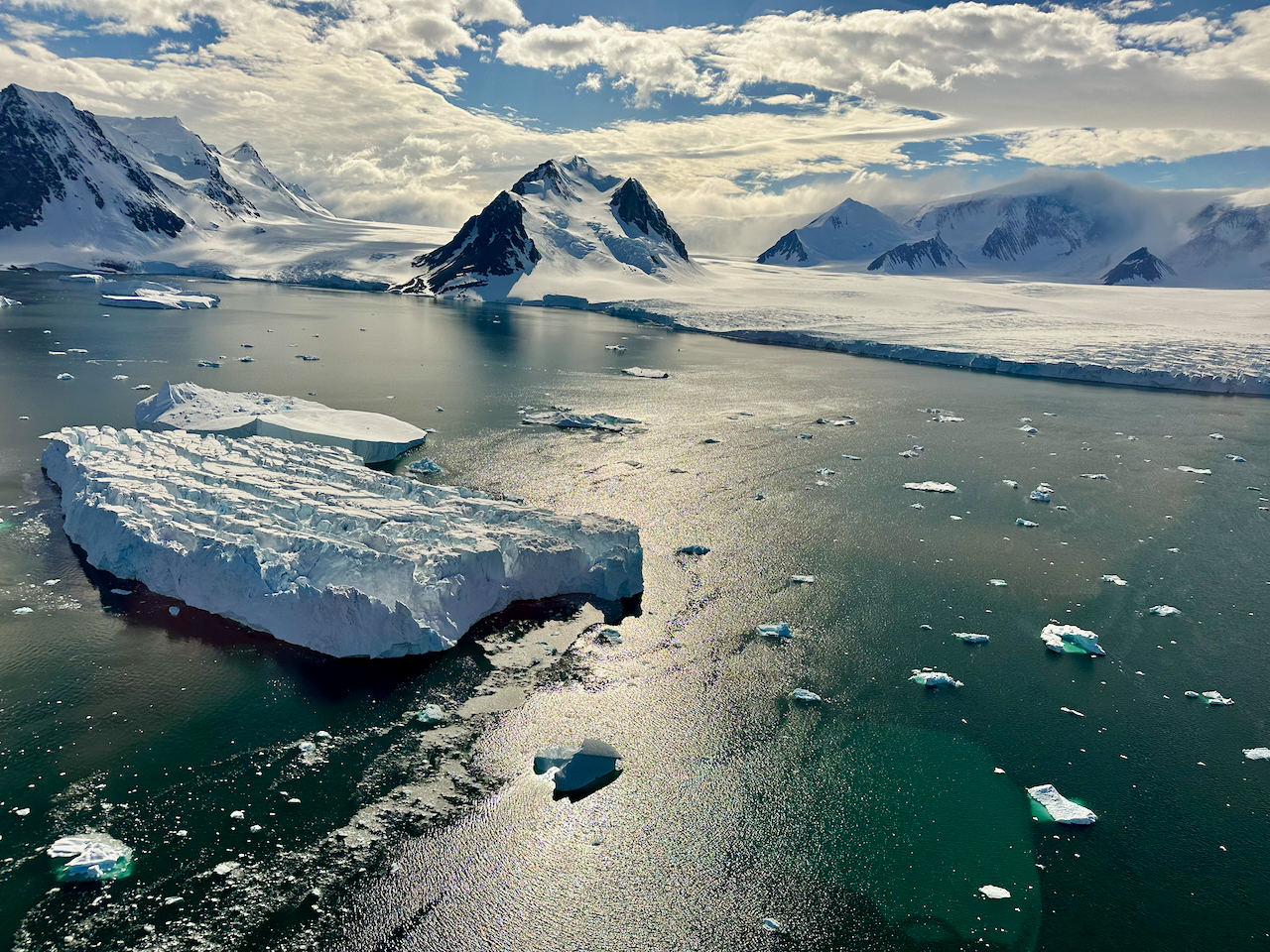
The view above from a helicopter of Antarctica’s mountains and glaciers. Photo by Anietra Hamper
Antarctica revealed
When Antarctica reveals itself in raw, unobstructed beauty, an authentic connectedness to the world happens in a way that no other earthly experience can do.
“People struggle to understand and care about things that they can’t see and touch. Being among the privileged few who get to be here means that your responsibility extends beyond your trip to spread awareness and knowledge about what you’ve experienced - not just how beautiful it is - but that these are places worthy of protection and need protection,” said Jon Fuhrmann, discovery leader on board Scenic Eclipse II.
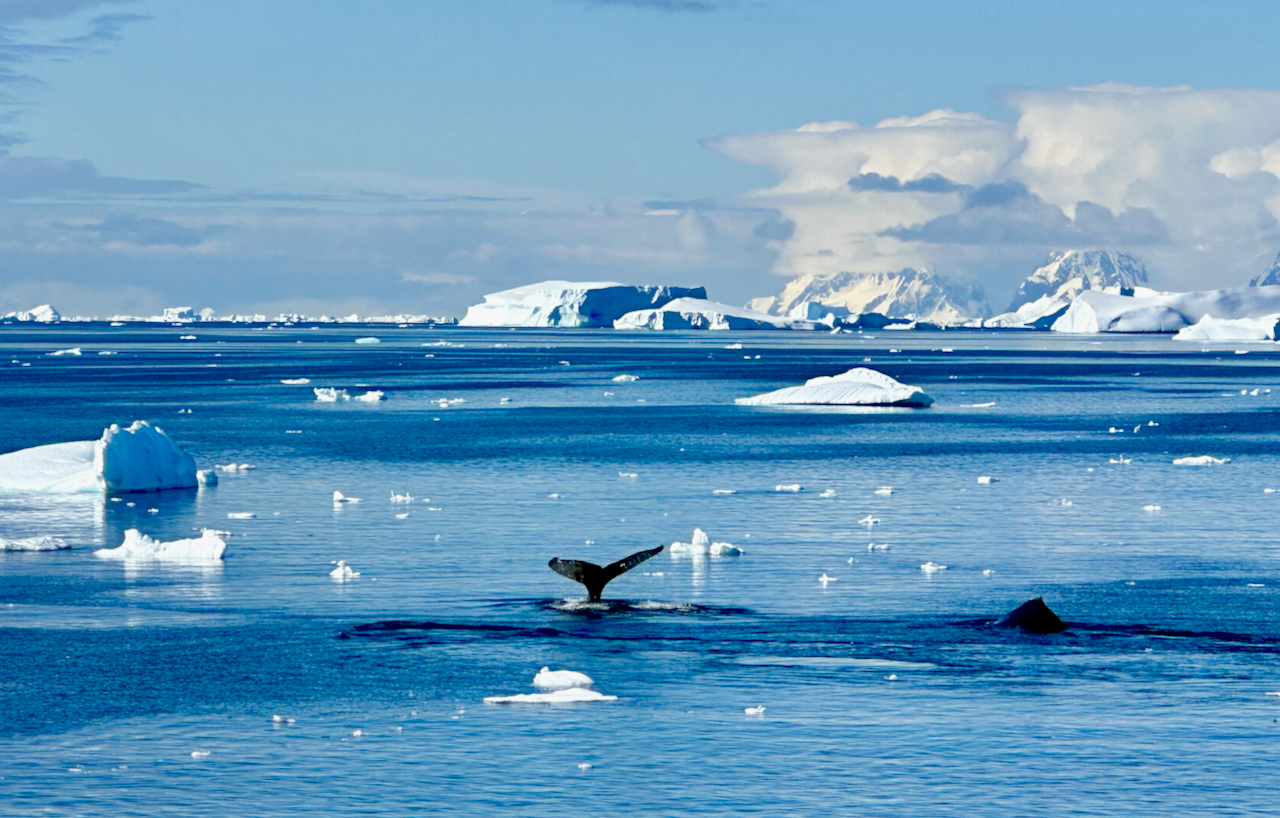
A pod of humpback whales make their way through icebergs. Photo by Anietra Hamper
Visitors become part of the chilled environment as the brisk air created by floating icebergs eventually penetrates through layers of clothing and they are lulled into a quiet serenity by the rhythmic crunching sound of floating ice beneath the zodiacs. Observing the mountain peaks by helicopter and watching humpback whales breaching and breathing on the surface are humbling, emotional and impactful moments.
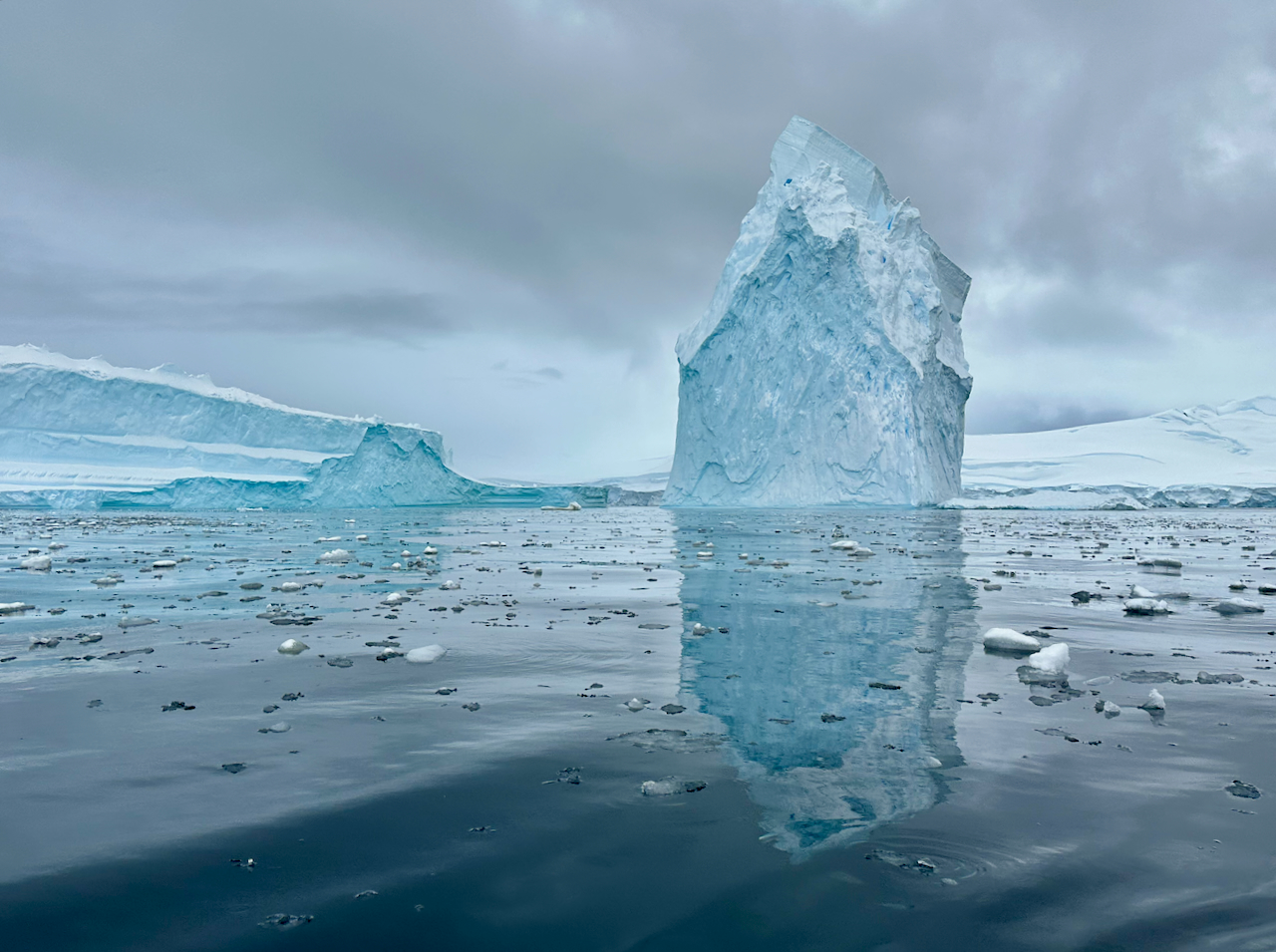
An iceberg emerging nearly 1000 feet above the water. Photo by Anietra Hamper
The ice alone is a spectacle. The thousands of shapes and sizes of icebergs, bergie bits and pancake ice offer a glimpse into the millions of years it took for them to form. Some icebergs towering nearly 1000 feet above the zodiacs put into perspective Antarctica’s inconceivable scale considering that what is above water is only 10% of its size. The other 90% is below water.
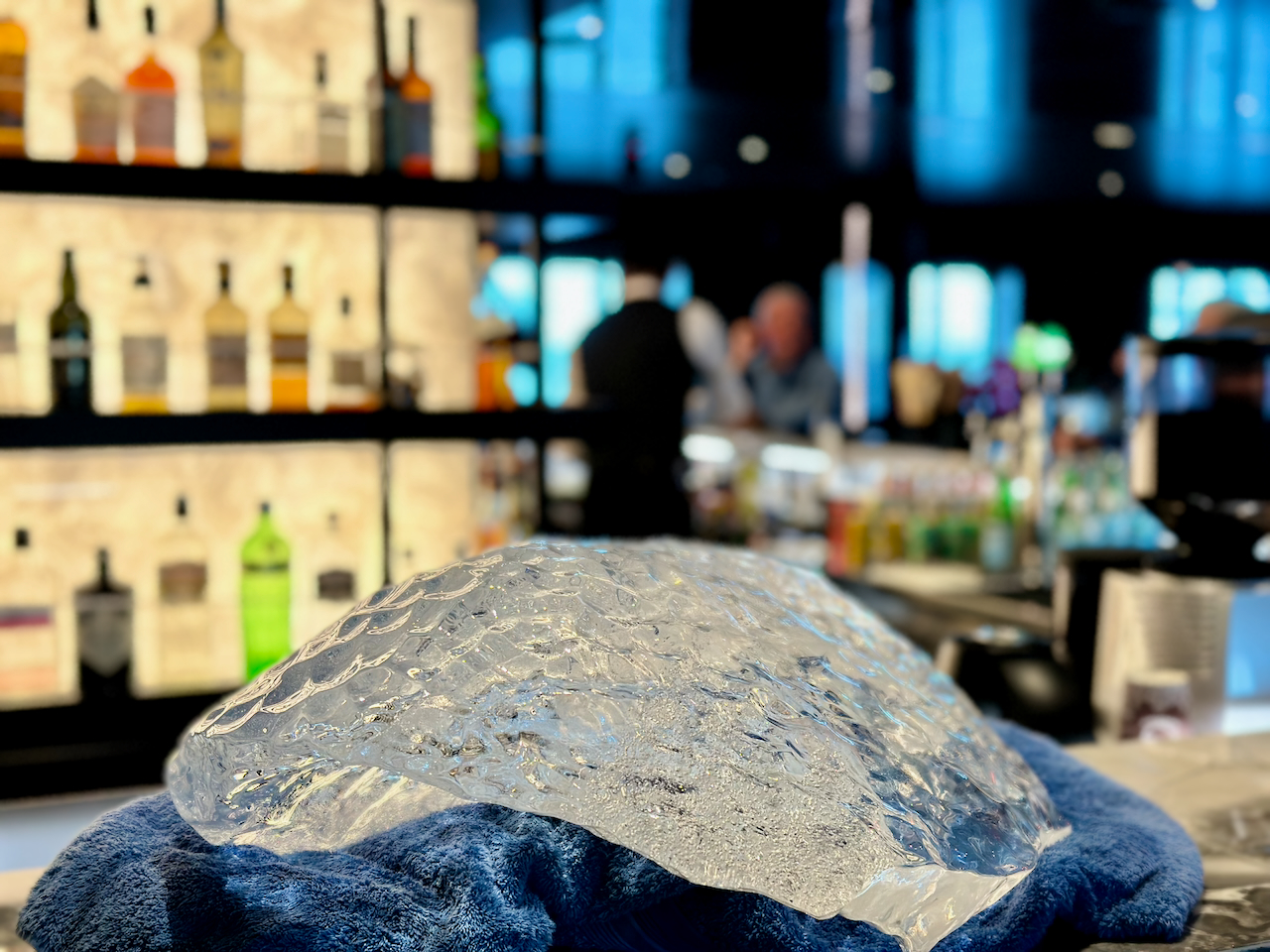
A chunk of iceberg ice brought onboard for evening cocktails. Photo by Anietra Hamper
While most everything is left untouched during an Antarctic expedition, on occasion a small chunk of floating ice can be taken back to the ship for use in evening cocktails.
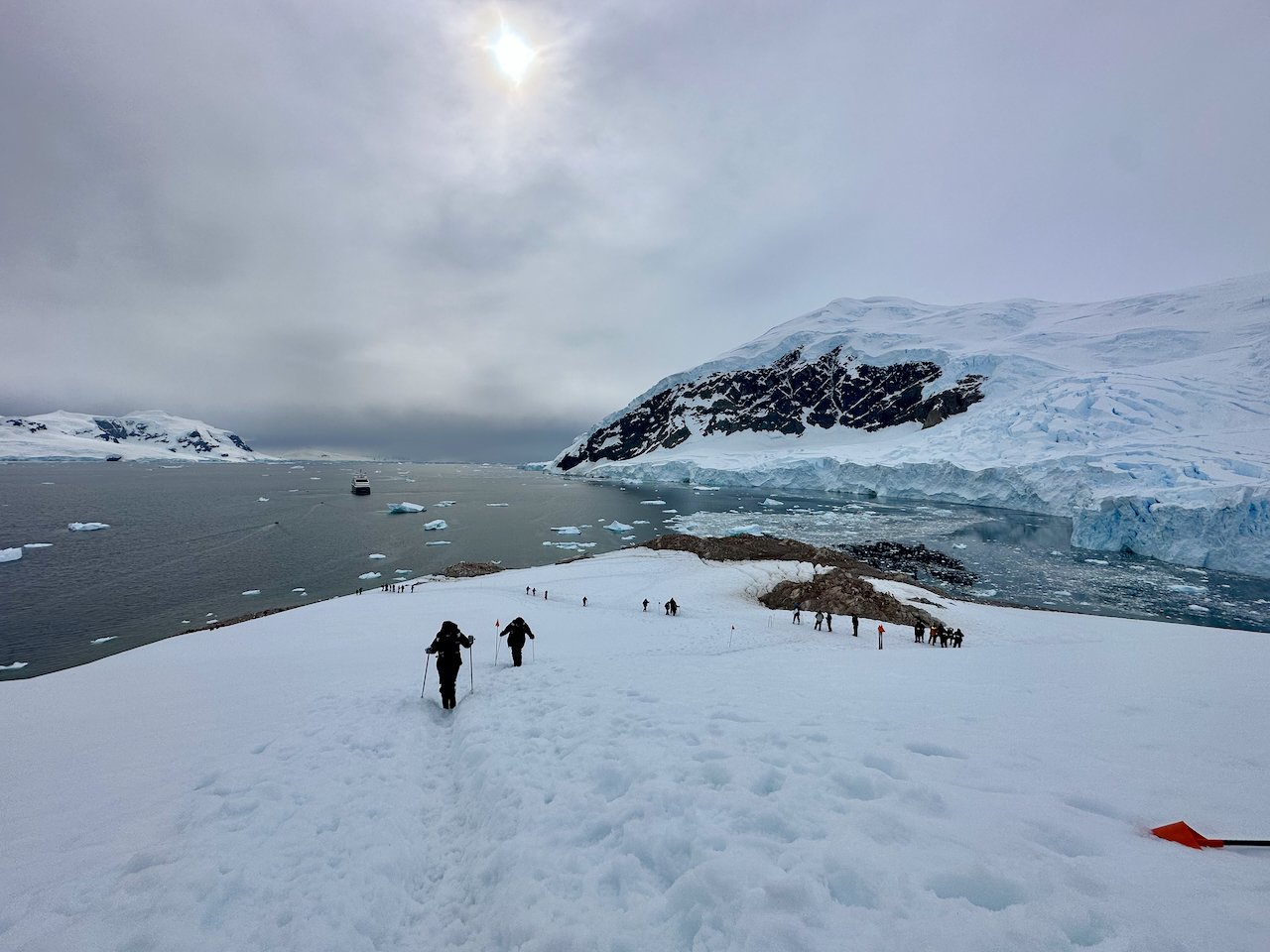
Scenic Eclipse II expedition guests on an Antarctic landing. Photo by Anietra Hamper
Careful exploration
Antarctic expeditions are designed to ensure that the experience begins and ends without any trace of being there. This happens in several ways.
Expedition vessels like the Scenic Eclipse II must follow regulations established by the International Association of Antarctica Tour Operators (IAATO). The self-governing body sets rules that enable operators to offer expeditions while minimizing their impact on the environment.
IAATO regulations dictate how many people can be on land at any given time, the distance from which wildlife must be observed and protocols for protecting the continent from litter and invasive species.
The regulations apply to every method of exploring including landings, zodiac cruising, kayaking, paddleboarding, helicopter excursions and submarine dives. Jason Flesher who manages the logistics for Scenic Eclipse has completed 100 voyages to Antarctica and admits that these expeditions are logistically challenging.
“It’s a beautifully coordinated ballet,” said Flesher. “It’s not about how to do the activity, but how do you move people to do all these things? It’s timing. The kayakers, paddleboarders, submariners and helicopter flights are specifically timed.”
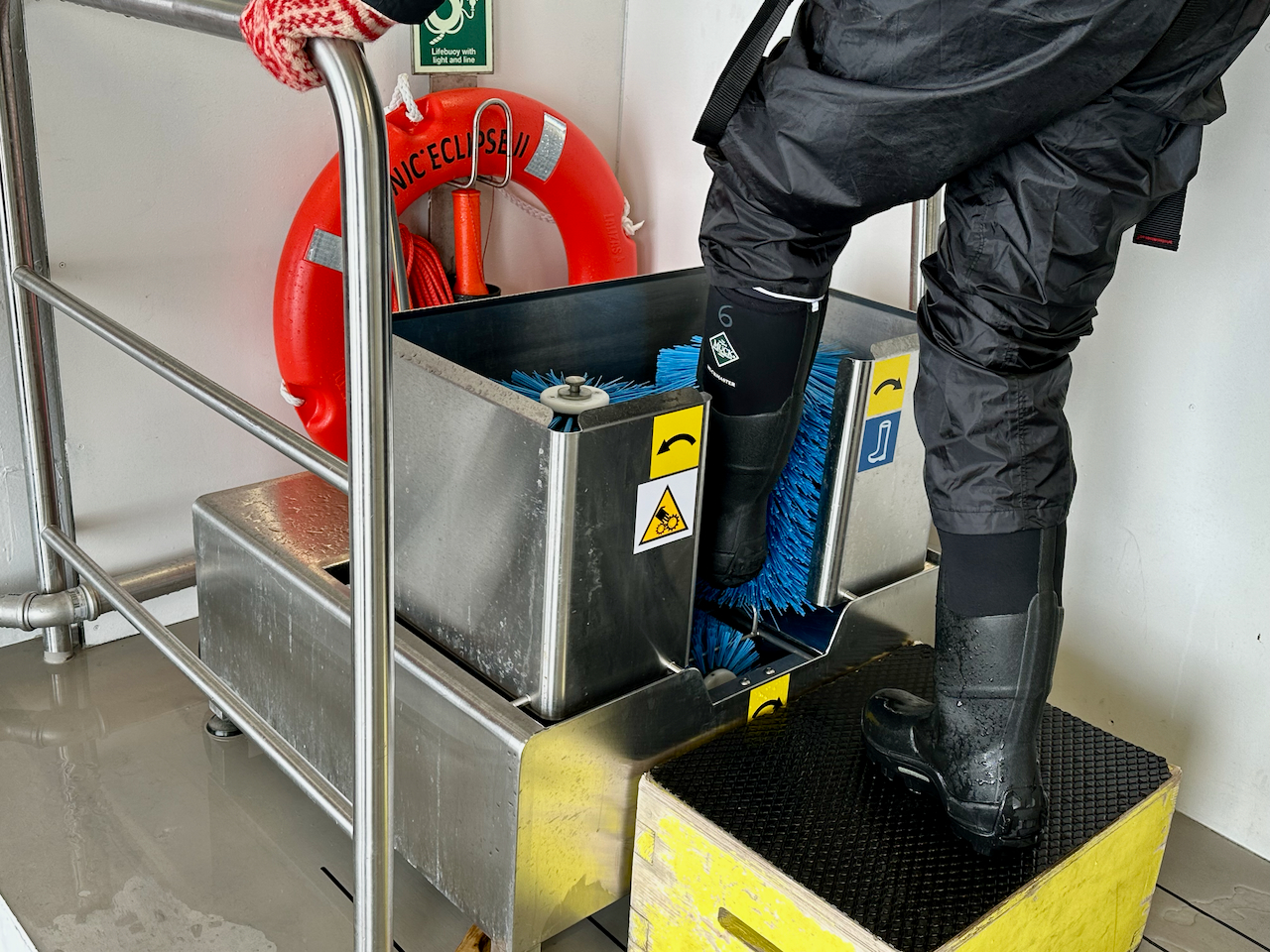
Boot sanitizing after a landing as part of biosecurity protocols. Photo by Anietra Hamper
Biosecurity is one of the most important factors to manage Antarctica’s environmental integrity so that nothing is brought in or removed. Expedition teams conduct clothing checks before guests first trek onto land, inspecting things like Velcro closures that can easily trap seeds or other transferable materials. Boots are sanitized after every landing and guests are instructed to place nothing like bags on the ground.
Guests are asked to do their part too before they arrive.
“Visiting Antarctica is a huge privilege and with that privilege comes responsibility,” said Fuhrmann.
Expedition participants must know and agree to the IATTO protocols that pertain to them like animal observation, brushing up on knowledge about Antarctica, and coming prepared with proper clothing for going ashore or being outside for any extended period.
Part of the reason expeditions make such an impact on those who do them is because guests become such an organic part of the process to keep Antarctica pure.
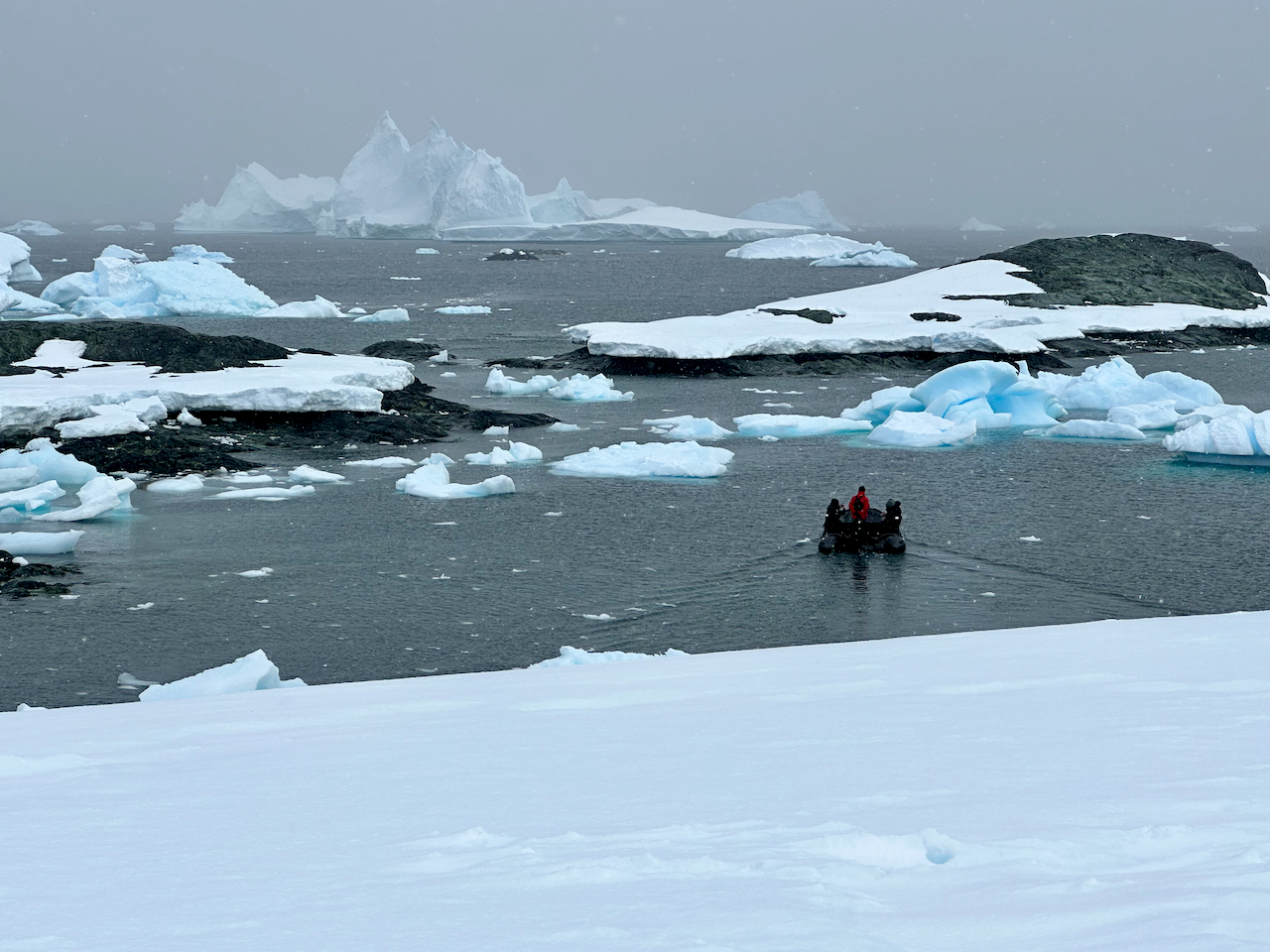
A zodiac transports expedition guests between land and the ship. Photo by Anietra Hamper
Changing conditions and expedition plans
While every expedition is carefully planned, Antarctica’s unpredictability ensures that all plans are subject to change.
Elements unique to the polar region like katabatic winds and sea ice are some of the real threats that can change the game plan on a dime.
“Katabatic winds are powerful winds that form at the top of the ice sheets where cold air sinks down and gets funneled through glacial valleys then out onto the ocean,” said Fuhrmann.
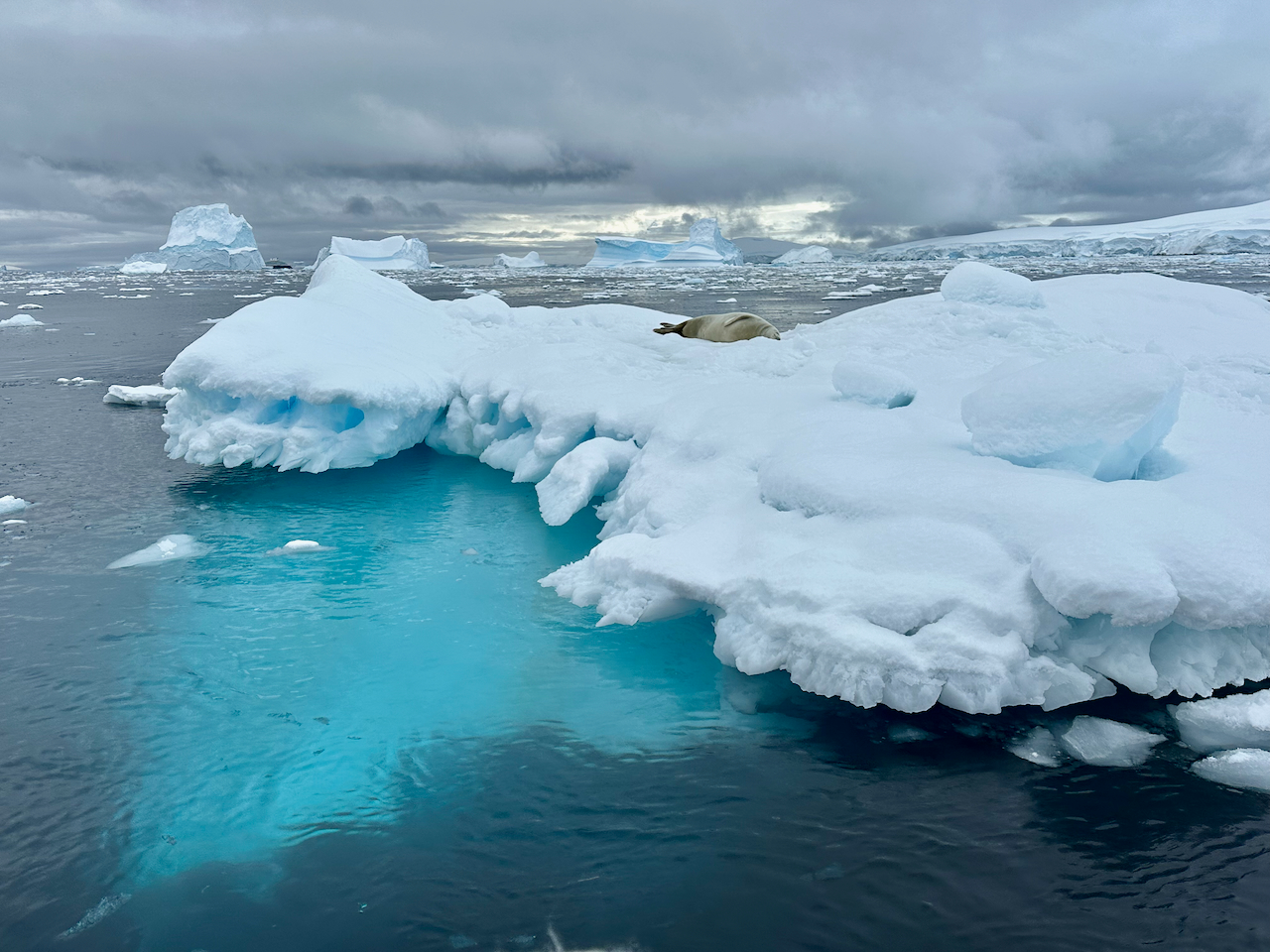
A seal sleeps on a floating iceberg. Photo by Anietra Hamper
The resulting slow-motion tsunami waves that can form are capable of icing in vast passages in as little as 20 minutes. This unpredictability means that plans can and do change quickly especially when it comes to zodiac and landing expeditions.
“To me that’s what discovery mode is all about. You make a plan given the best information that you have but you must be prepared for the reality that things often look very different from what you find in forecasts,” said Fuhrmann.
The expedition team is a crew of navigators, naturalists, biologists, and experts in other disciplines who are constantly monitoring ice charts, watching for nearby wildlife, noting shifting icebergs and changing the itineraries as dictated by current conditions. This makes the adventure even more exciting.
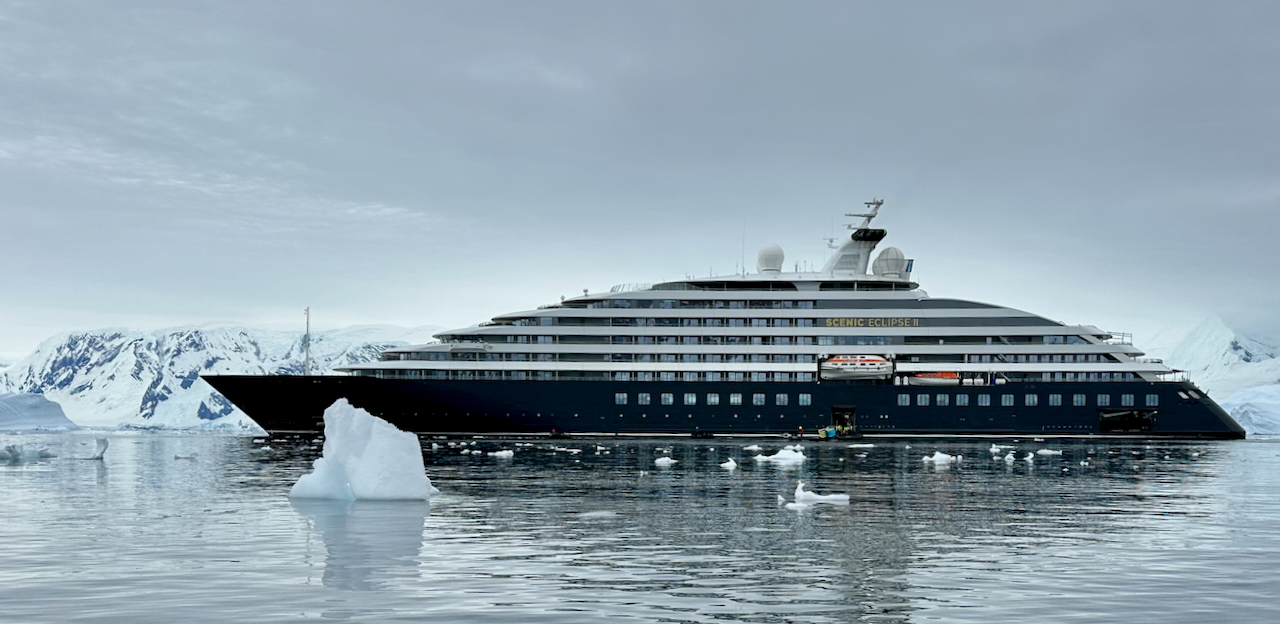
Scenic Eclipse II Discovery yacht positioned for the day’s expedition. Photo by Anietra Hamper
Built to explore and protect
The Scenic Eclipse II was the first ship purpose-built for Antarctica not just for functionality and passenger safety but for walking the talk of environmental stewardship.
The ship and crew operate under a set of Cherish the Planet initiatives that help minimize human impact on Antarctica’s naturally pristine environment.
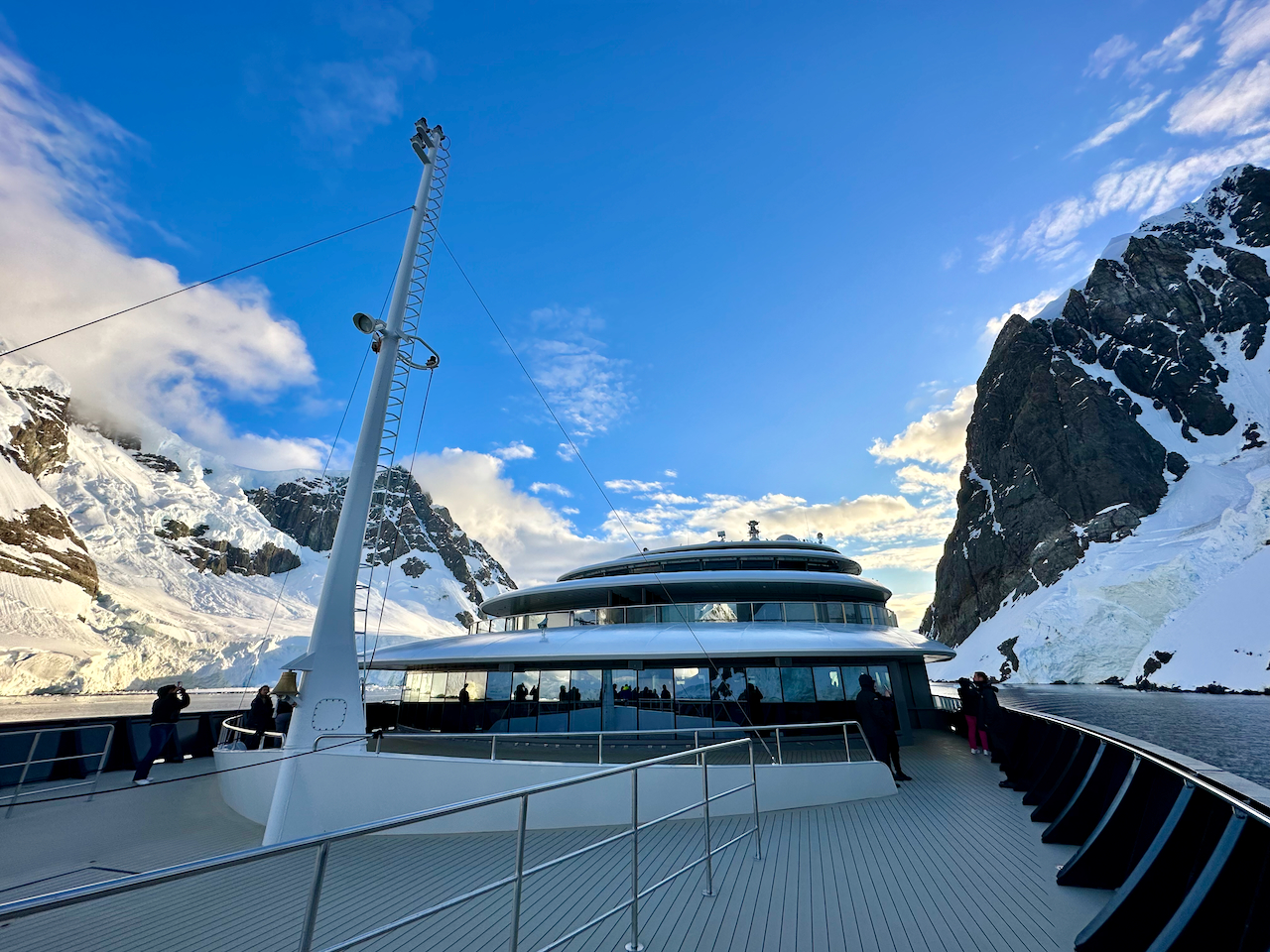
The Scenic Eclipse II passing through the Lemaire Channel. Photo by Anietra Hamper
The ship was built with a certified Polar Class 6 rating meaning it’s capable of cutting through 1.6 meters of ice and has environmentally focused features like dynamic positioning technology that enables it to hold position without dropping an anchor. This protects the ocean floor. Advanced propulsion systems minimize vibration and disturbance to marine life.
Wastewater on the ship is treated before being discharged and a ballast water treatment system ensures that no invasive species are transferred. Everything on the ship including the furniture is purchased from certified green companies and both the Scenic Eclipse and the Scenic Eclipse II are on track to become carbon neutral by 2025.

A chef’s garden on the ship grows small microgreens. Photo by Anietra Hamper
Managing food waste is another top priority. The protocols on the ship for food prep are micromanaged to make sure that food like lettuce is turned every few days to maximize shelf life. There is even a small microgreens garden onboard to grow garnishes and herbs.
“Planning is key,” said Vicktor Malek, executive chef of kitchen operations for Scenic Eclipse II. “We plan up to three to four months ahead especially for being in these remote areas and for things like produce that have a limited shelf life.”
The ship’s environmental officer oversees culinary logistics that are necessary for keeping explorers fed while aligning with the company’s commitment to come and go without any trace of being there.
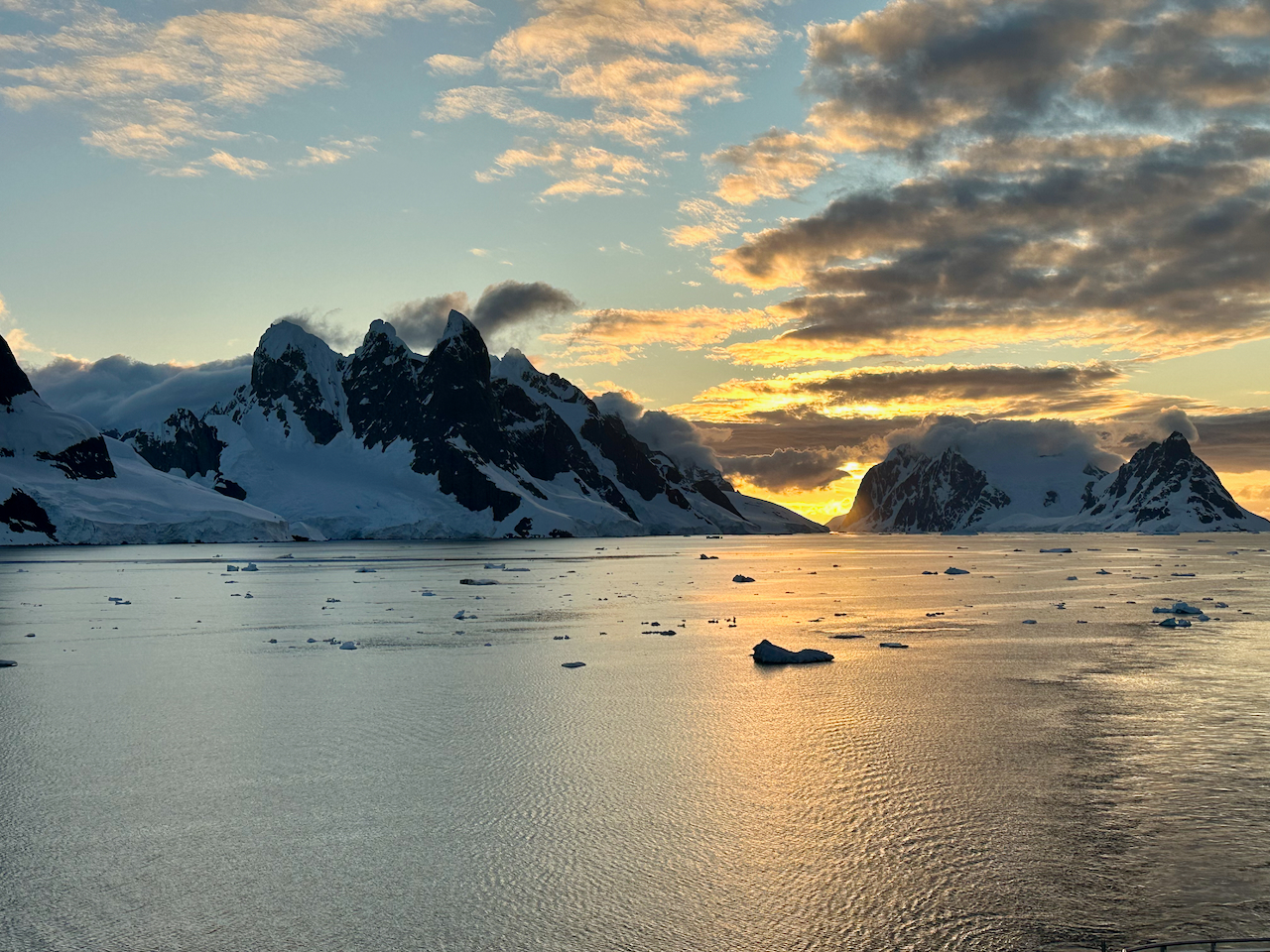
The Lemaire Channel in Antarctica at midnight. Photo by Anietra Hamper
Antarctica is one of most preserved places on Earth but while its climate is bitter, its existence is delicate. With nearly 24 hours of daylight during Antarctica’s summer months (October to February) expeditions enable people to see first-hand the evolving glaciers, wildlife existing in its natural state and features of special passages like the narrow Lemaire Channel that is frozen through the rest of the year.
While all of these are memorable lifetime experiences, the responsibility that comes with the expedition experience means becoming a conservation advocate to protect it.
